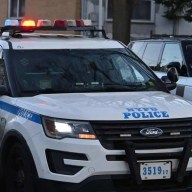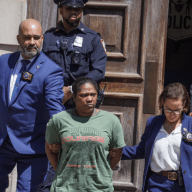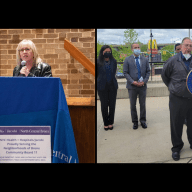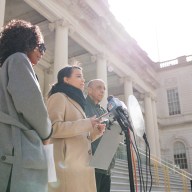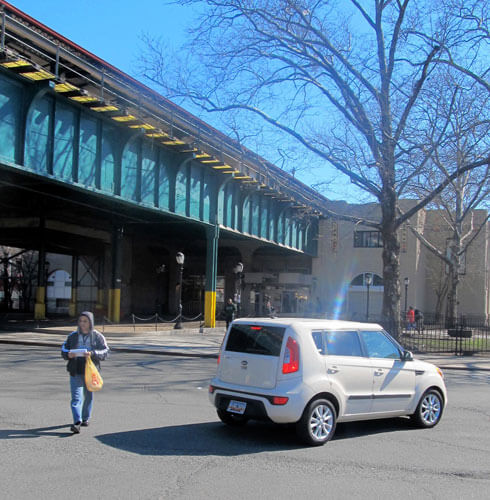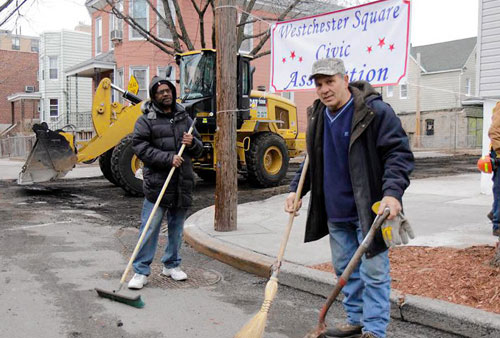The latest rollout of the Department of Transportation’s “Slow Zone” program to curb speeding has local winners beaming and losers grumbling.
Sections of Parkchester, Westchester Square and Norwood were awarded Slow Zones in early October with plans for construction over the next three years.
Five slow zone applications in Community District 11 —including proposed slowdowns in Allerton, Pelham Parkway and Pelham Gardens — were rejected.
Neighborhoods getting slow downs will get blue signage and street painting announcing speed decreases from the citywide 30 MPH to 20 MPH.
The city’s first slow zone was unveiled in Claremont in 2011. Since then the DOT has installed slow zones in Mt. Eden, Baychester, Eastchester and Riverdale.
DOT research showed that while a pedestrian hit by a car traveling at 40 MPH has a 70 percent chance of death, someone hit by a car going 25 MPH survives 95 percent of the time.
Westchester Square
“I was ecstatic. Someone is finally listening, “ Lou Rocco said of getting a slow zone for Westchester Square.
Slated for 2016, it will run from E. Tremont Ave down to the elevated No. 6 line on Westchester Avenue, as far west as Owen F. Dolen Park and east to Castle Hill Avenue.
President of the Westchester Square Civic Association, Rocco cited cars racing up Overing Ave. to make the green light on E. Tremont as just one issue.
The zone has two schools and averages 19 traffic injuries per year, according to the DOT.
Parkchester push
A Parkchester neighborhood loaded with seven schools was chosen as another of the 15 areas citywide for a slow zone over the next three years.
Residents in Assemblyman Luis Sepulveda’s district raised such high-pitched concerns about traffic on the Metropolitan Oval and the Hugh Grand Circle that the freshman pol was relieved when the DOT give his office’s application the nod.
Parkchester’s slow zone, also planned for 2016, runs east to west from White Plains Road to Castle Hill Avenue, and north to south from E. Tremont Ave to the elevated subway line on Westchester Ave.
The area averaged 33 crash-related injuries per year from 2007 to 2011, according to the DOT.
Norwood’s slow zone, scheduled for a 2014 installation, runs east from the Bronx River Parkway to Bainbridge Avenue, bordered by E. Gun Hill Road on the north and E. 204th Street on the south.
The DOT cited a concentration of pre-kindergarten and daycare services in the area as reason for the zone’s selection.
Bronx Park bummed
Four applications were shown the door, including a stretch of Bronx Park East that includes two schools and numerous senior and daycare centers.
“Our neighborhood deserves to be given priority for reducing speed,” said Raphael Schweizer, who submitted an application on behalf of the Bronx Park East Community Association.
The Bronx Park East slow zone would have ran east to White Plains Road, as north as Allerton Ave. and as south as Pelham Parkway North. It would have prevented motorists from speeding down Barking Avenue toward P.S. 96, where accidents are common, Schweizer said.
Allerton angered
A proposed slow zone north of Allerton Ave. that includes four schools was also denied.
Community leader Irene Estrada who filed the application, said she collected over 500 signatures, and letters of support from the Principals of P.S 76, Aspire Preparatory Middle School, Bronx Green Middle School and St. Lucy’s Catholic School.
Estrada’s slow zone would have stretched east to west from White Plains Road to Bronxwood Ave., and as far north as Adee Avenue.
Locals will now have to wait until at least 2016, when the DOT says it will reopen the application process.







